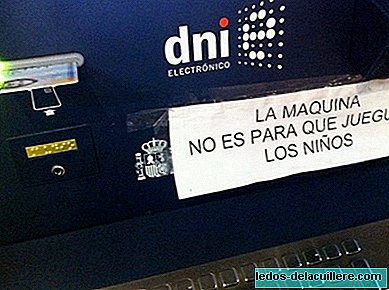Recently the OECD (Organization for Cooperation and Development) has published a study, based on the 2012 PISA report, which does not leave our country in a very good place. Something that, unfortunately, has been common in these cases.
According to the said study one in ten 15-year-old Spanish students does not reach a basic level of knowledge. This means that in adulthood they will have problems when it comes to solving common problems in modern life. This is one of the seven conclusions of the last OECD study for Spain.
In this report Spain manages to reduce by two points the percentage of students who do not exceed the average of the countries that have presented with respect to previous years, but still the mathematics are still going through the Spanish youth, 24% being the percentage of Students who do not pass the test.
The profile of the student with the worst options
It is considered that a student who lives with his parents, in healthy economic conditions, who speaks the same language spoken in school, who lives in a city and has done more than a year of early childhood education has 10% lagging in mathematics.
These probabilities increase if the student is a woman, immigrant or comes from an environment with low family income or those who have not received preschool education and have enrolled in FP.
Female students however maintain similar or even better results to male students in the other two subjects reviewed by study, reading and science.
Family income is the most influential piece in our puzzle
"The most important thing is family income," explains Alfonso Echazarra, an OECD analyst.
The poorest students are three times more likely to fall behind than the rest.
In the words of Charo de la PAz, a retired teacher and director of the Arturo Soria Institute, to solve this it is necessary to apply reinforcement programs and invest money in them. Educational policy must go hand in hand with others such as health or social services that improve the quality of life of families.

More resources
The OECD report is blunt in this regard, to solve this situation it is necessary to invest additional resources in education, just the opposite that the government of the country did.
It also recommends converting low performance as a national educational priority. This agency warns that a high proportion of the population lacks the necessary knowledge and skills The long-term growth of a country can be compromised. In fact, he estimates that if all 15-year-old students in Spain reach at least level 2, the basic one in PISA, the GDP of Spain in 2095 would rise by 15 percent.
The Ministry of Education reduced in 2016 his departure for compensatory education, aimed at guaranteeing equity, 2.6% up to 5.11 million euros. This game lost almost 90% of its funds in the 2015 budgets, when 48 million were cut to the money destined to the “compensation of inequalities”
Which centers are the best?
According to the study, students are less likely to have poor performance if they attend Spanish concerted centers, compared to public or 100% private. It is understood that in the latter the performance is lower due to the low motivation when dealing with students with high purchasing power.
It should be noted that at this point the difference between public and concerted education is on par with regard to the educational level and far from the European average.

Repeaters and dropping out of school
Spain is at the forefront of Europe regarding early school leaving. The percentage of students who leave school after finishing the compulsory period is 20%, a fact that has been reduced in recent years, but still remains twice as high as in the European Union.
Many of us interpret the high dropout in Spain not so much with the students in the lower part of the distribution of the results but rather with what is done with them. Latin countries tend to facilitate the repetition of the course and that leads them to leave earlier, they are expelled from the system, adds Jaime Rivière.
Individualized School Reinforcement
The OECD recommends a plan to reduce this low student performance, which includes as main measures dismantle the "multiple barriers" of learning, create a "demanding" environment that in turn offers support to students, offer school reinforcement "as soon as possible", encourage parents to become more involved in their children's school life, design strategies appropriate to the profile of the student with poor performance.
And not only do they stay there and add to the previous recommendations a crash plan and action measures for the immigrant student reinforcement, remove the gender stereotypes and give support for single parents, limit the separation of students by academic level and reduce inequalities in access to early childhood education.
Loss of classes and poor effectiveness in the time spent on homework
According to the study, underperforming students lose twice as many teaching hours as their European counterparts. Also said students they spend less time studying and homework, they spend an average of 4.7 hours per week compared to 7 of the students who do pass the test and in both cases it is an hour more than average than the rest of the OECD students.
It is clear that the public authorities still do not take the education of our children seriously, with the parents mainly taking into account both the economic effort and the measures to avoid school failure. As long as we continue like this, the future will remain gray and uncertain.












